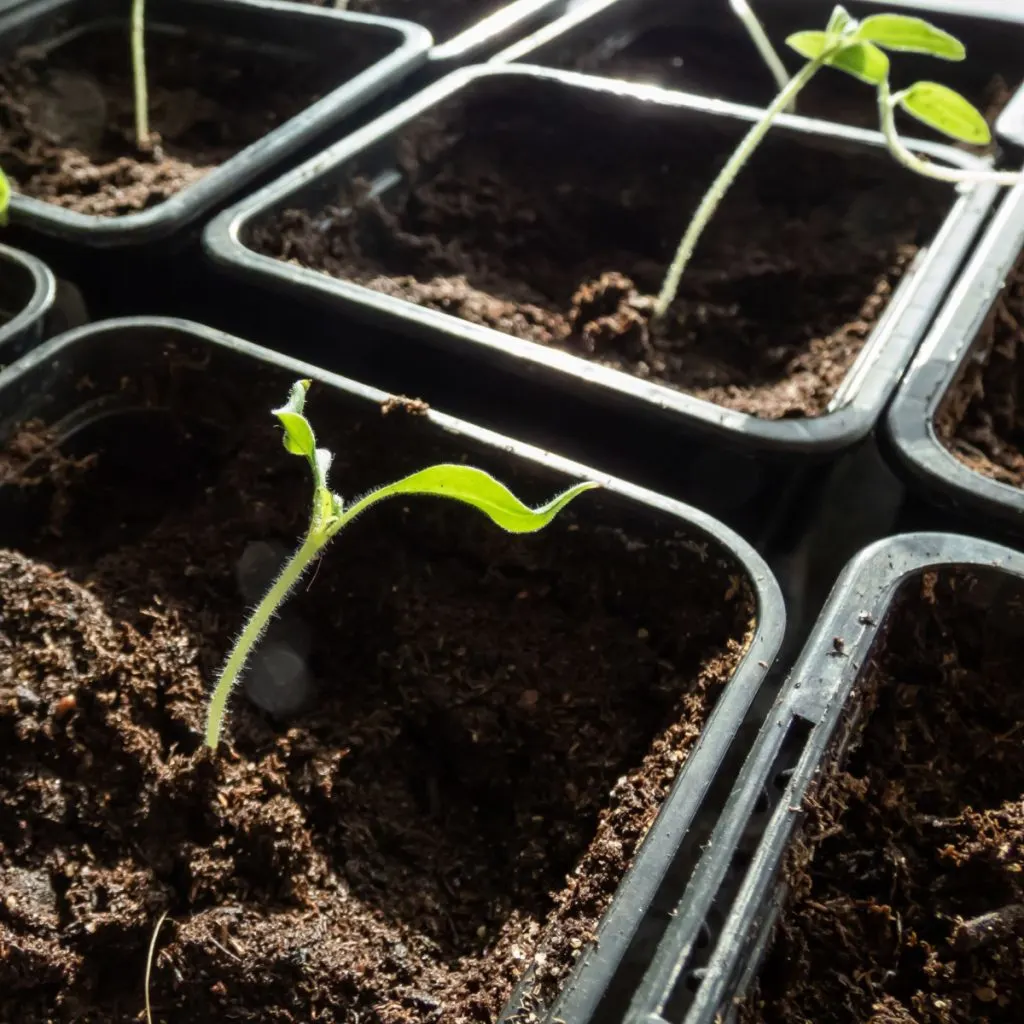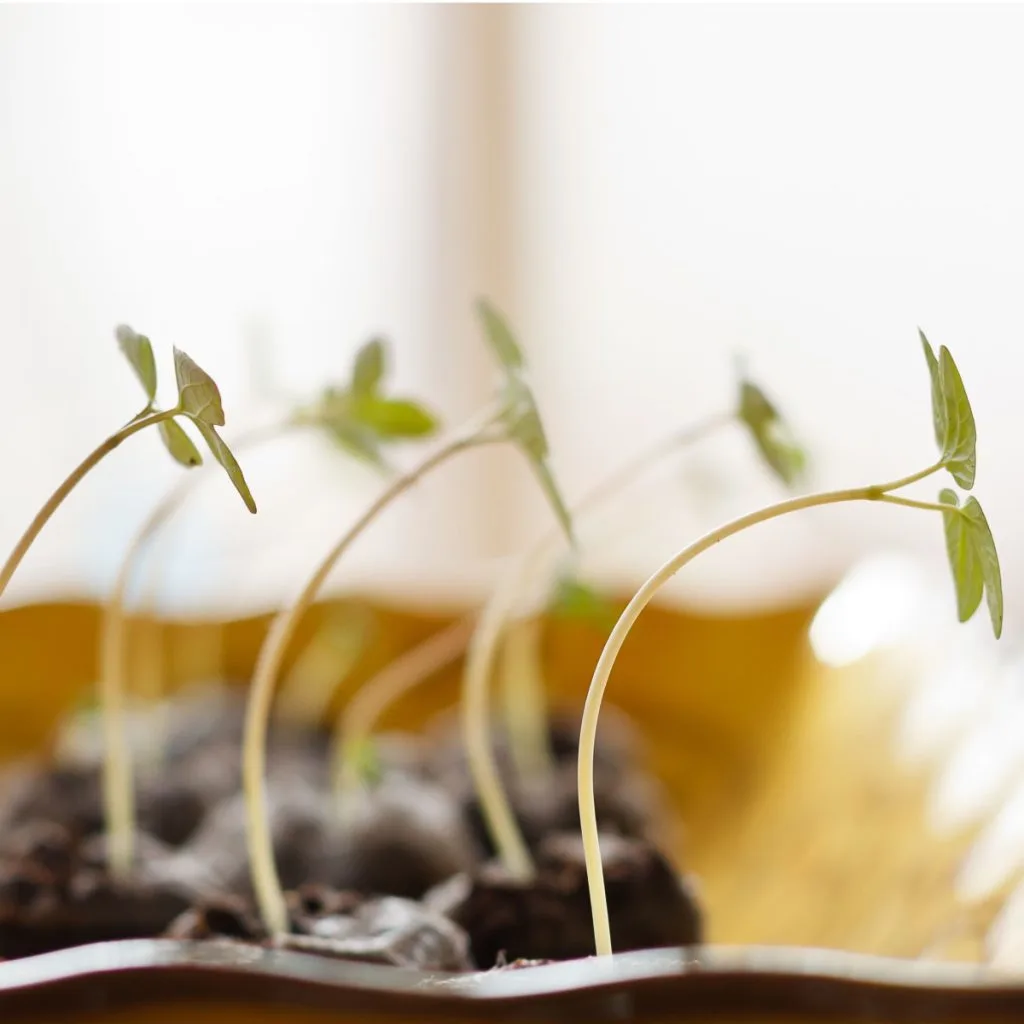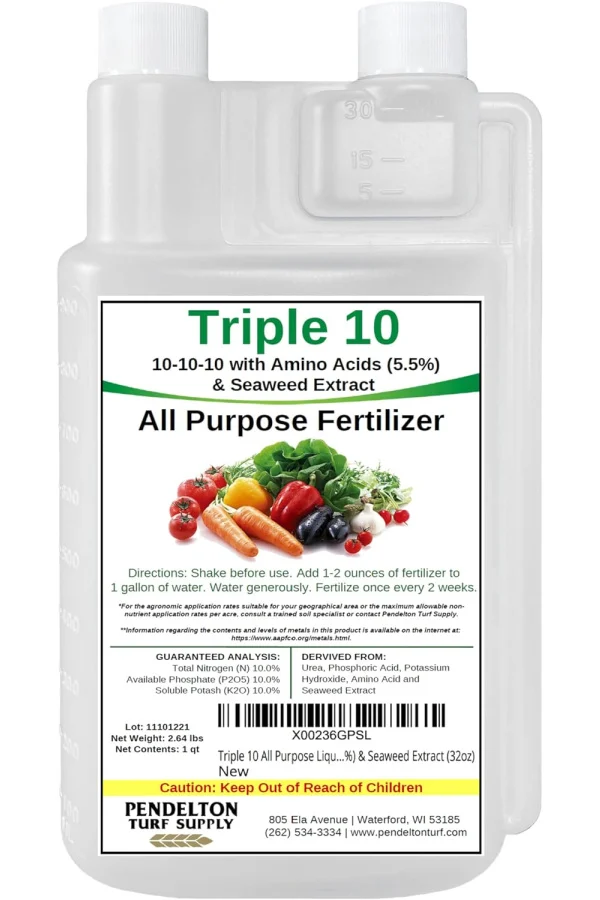Wondering how and when you should fertilize all of those vegetable and flower seedlings you are starting and growing indoors? And what’s the best choice for powering them up safely?
Growing strong, healthy transplants begins with giving your seedlings the right care and nutrition during their first few weeks of life. The first six to eight weeks of a vegetable or flower seedling’s growth are absolutely critical for setting the foundation for a successful, thriving plant.
Unfortunately, one of the biggest mistakes gardeners make during this time frame is failing to give them a little boost of energy as they begin to grow. Although it’s true you can overpower young plants with too many nutrients – failing to give them any at all can mean having weak, feeble plants come planting day.

One thing is for sure, fertilizing young seedlings at the right time, and with the right dose really is the secret to powering up transplants for long term success. With that in mind, here is a look at the best fertilizer to use, how much to apply, and why a gentle approach in the early stages of growth can make all the difference!
The Best Way To Fertilize Indoor Seedlings
The Critical First Weeks – Why Seedling Nutrition Matters
The first six to eight weeks of a seedling’s life are a period of rapid development. During this time, seedlings shift from tiny, fragile sprouts into well established young plants. All with the hope of being able to be ready for outdoor growth once planting day arrives.
Proper nutrition during these early stages is essential for building a strong root system, developing sturdy stems, and producing healthy, vibrant foliage. Without adequate nutrients, seedlings can become weak, spindly, and more prone to disease.
Even with good lighting and watering habits, seedlings will struggle if they don’t receive the right nutrients. But the strength and the type of those nutrients matter greatly.

Fertilizing too early or with too much power can cause just as many problems as neglecting to fertilize altogether. The key is to apply fertilizer in a timely, measured manner that gives seedlings the nutrients they need – all without overwhelming their delicate root systems.
When to Start Fertilizing Indoor Seedlings
Seedlings begin their lives by drawing nutrients from the seed itself. This nutrient make-up of the seed provides everything the plant needs to germinate and grow its first set of leaves. At this point, extra power can be detrimental.
Once seedlings have developed two to three sets of true leaves, which usually occurs around three weeks after germination, it’s time to start helping them out with some additional power. At this stage, the plant’s roots are established enough to absorb nutrients without damage, but the plant is still in a crucial growth phase where extra energy can make a significant impact.
At this point, it’s also critical that your plants are getting a good 8 to 10 hours of daily light. Unfortunately, window light is not strong or long enough to provide this. But an inexpensive fluorescent or LED shop light can! See: The Best Lights To Use To Start Seeds Indoors.
The First Fertilizer Dose: A Gentle Boost
The initial feeding needs to be gentle. It will provide the seedlings with a mild nutrient boost without the risk of burning their delicate roots. To achieve this, it’s best to use an all-purpose liquid fertilizer in the 5-5-5 to 10-10-10 range. Affiliate Link: Triple 10 All Purpose Liquid Fertilizer 10-10-10

But here is the key when fertilizing indoor seedlings – mix it at only a 10 to 20% strength ratio. For example, if the fertilizer’s instructions call for mix 10 ounces for every gallon, mix only one to two ounces. This diluted solution will deliver a light, fast acting nutrient boost without too much power.
Seedlings are incredibly sensitive to nutrient levels during their early growth stages. Applying fertilizer at full strength can easily overwhelm the root system, leading to stunted growth, or even plant death.
The goal of the first feeding is to provide just enough nutrients to support growth without causing stress. The weak fertilizer solution works by delivering small amounts of nitrogen, phosphorus, and potassium, which happen to be the three primary nutrients seedlings need for development.
Nitrogen supports leafy growth, phosphorus aids in root development, and potassium helps with overall plant health and disease resistance. This initial dose gives the seedlings a nutritional jump start while allowing their roots to continue growing and maturing naturally.
When applying the fertilizer, always water the seedlings at the base to avoid getting the solution on their leaves. Getting fertilizer on the leaves can burn them quite easily at this stage. A small watering can or even a water bottle is perfect to put the fertilizer right to the roots.
Listen Below To Our Podcast On The Secrets To Starting Seeds Indoors!
The Second Dose – Fertilizing Indoors Seedlings For Transplant Day!
As seedlings continue to grow, their nutrient needs increase. Around the five to six week mark, it’s time for the second round of fertilizer.
By this point, your seedlings will have a much more robust root system and several sets of true leaves, indicating that they’re ready for a stronger boost to prepare them for transplanting.
For the second feeding, use the same liquid fertilizer. But this time, mix it at 50% of the recommended strength. For instance, if the instructions call for one tablespoon per gallon of water, use half a tablespoon instead.
This more concentrated dose will provide the power seedlings need to build strong roots and foliage. And, stronger plants can adjust better to outdoor conditions once they are planted.
Apply the fertilizer in the same manner as the first dose, watering at the base to direct the nutrients to the roots. This feeding will encourage the seedlings to grow thicker stems, broader leaves, and stronger roots.
Now all that is left is to wait for planting day – and your best harvest ever later this summer!
Simple Garden Life
Follow Our Facebook Page For Even More Great Tips! Simple Garden Life Facebook Page
Simple Garden Life is a website dedicated to keeping gardening fun, simple and enjoyable! We publish two new articles each week along with a new garden podcast episode every two weeks. This article may contain affiliate links.
